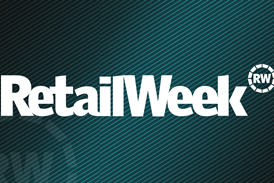
Analysis: How 16 global retail markets are responding to crisis
Nineteen senior leaders from organisations including Falabella, Tendam, Woolworths South Africa, Al Tayer and the BRC have contributed to Resilient Retailing – the latest international report from Retail Week and World Retail Congress

Doubling down on value, adding strategic buffers to alleviate supply chain pressures, investing in stores – these are just some of the shared actions retailers and brands worldwide are taking to survive the current economic climate.
These priorities are highlighted in Resilient Retailing, the latest Retail Week and World Retail Congress (RWRC) report, which features 19 retailers, industry representatives and experts from 16 key international markets lifting the lid on the worldwide crisis response.
Published ahead of World Retail Congress 2023, taking place in Barcelona on April 25-27, the report highlights what is happening to retail in these markets alongside the global economic outlook for the year ahead.
The report reveals not only the challenges retailers are facing but the solutions they are investing in, across Australia, Chile, China, France, Germany, India, Italy, Japan, Pakistan, Saudi Arabia, South Africa, Spain, the UK, the USA, Europe and South East Asia.
Produced in partnership with Quantum Metric, contributors include high-profile names such as Falabella CEO Francisco Irarrázaval, Tendam Corporate General Manager Ignacio Sierra, Woolworths South Africa Honorary Chair Simon Susman and British Retail Consortium CEO Helen Dickinson.


WELCOME TO THE ERA
OF RESILIENT RETAILING

It is evident from the report that many of the issues retailers are navigating are not happening in isolation; inflation, talent shortages, supply chain chaos and the energy crisis are impacting businesses across many international markets.
However, there is optimism to be found away from the depressing headlines.
Here are three ways retailers and brands from the 16 markets are proactively responding to crisis – aka: retailing resiliently.

1. Prioritising value over everything
The US, Australia, France, Germany, Saudi Arabia and South East Asia are just some of the markets feeling the full force of inflationary increases. However, inflation is impacting some markets worse than others; the UK, for instance, is experiencing the highest inflation rates in 40 years and the International Monetary Fund forecasts that the country will have the lowest growth of all G7 economies next year.
To mitigate the impact, retailers worldwide must focus on their value offer. In France, we’ve seen how retailers are already adjusting their ranges and communicating ‘anti-inflation’ promotions; in Japan, retailers such as Bluebell are revising their pricing; in Australia, there is a focus on own-label brands; and in Germany, ranges are being adapted to “the needs of a consumer who is looking for value and essentiality”.
In the UK, the BRC’s Dickinson flags that “affordability has become one of the primary drivers of what consumers buy, with some consumers choosing to trade down – buying cheaper versions of what they used to purchase – and others simply purchasing less”.

2. A store revival is underway
Retailers in several markets are investing in their stores despite challenging trading conditions. In Australia, Colette Chair and Owner Bernie Brookes highlights how he is investing in store expansion across his brands to get “ahead of the curve” and shares his view that stores will be key to filtering out those retailers that will survive the next few years.
In Saudi Arabia, major retailers are scaling up investments in store refits to improve the customer shopping experience. And in the UK, stores maintain a stronghold – £3 in every £5, excluding food, is spent in-store. While ecommerce continues to drive growth across the globe – in India, in particular – the role of stores cannot be underestimated.

3. Supply chain strengthening
Supply chain disruption is being felt by retailers worldwide but businesses are taking action to alleviate the pressure. In the US, retailers and brands are buying up inventory earlier to avoid snarl-ups and it is a similar story in Australia, where businesses are increasing stock-holding capacity and inventory to allow for disrupted supply – namely, from China.
From France, the report showcases how retailers are beginning to absorb supply problems with shipping container prices falling. In South Africa, retailers such as Woolworths are building resilience by reducing their reliance on globally sourced products and shifting to locally sourced goods.
Discover just how retailers and brands from around the world are stepping up to navigate major challenges and support customers.
Download your free copy of Resilient Retailing today





















